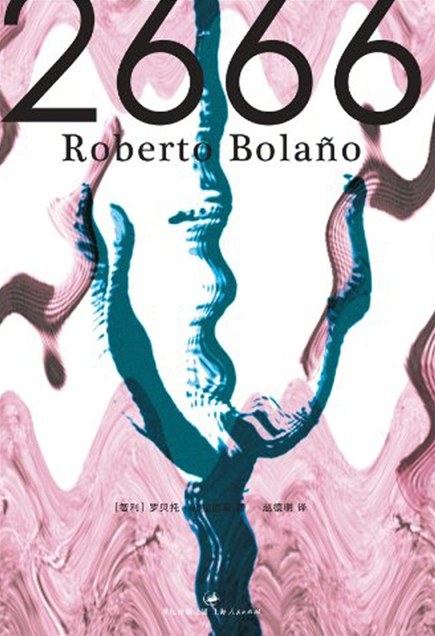WULOLIFE
《2666》 作者: [智利] 罗贝托·波拉尼奥 出版社: 上海人民出版社
《2666》 作者: [智利] 罗贝托·波拉尼奥 出版社: 上海人民出版社
Couldn't load pickup availability
Description
内容简介 · · · · · ·
美国全国书评人协会最佳小说奖
《纽约时报》年度十佳图书之首
《时代》周刊年度最佳小说
《洛杉矶时报》年度最佳小说
《旧金山纪事报》年度50部最佳小说
《西雅图时报》年度最佳图书
《纽约杂志》年度十佳小说
美国Amazon 年度编辑选书 读者最爱十大书籍
25 years ago
新千年最佳小说
2666的五部分讲述了五个独立又彼此呼应的故事。第一部分《文学评论的文学评论家,因为共同喜欢及研究一位德国作家阿琴波尔迪而成为朋友进而成为情人的故事。几人得知阿琴甚至有轻喜 有很强的梦幻色彩。
第二部分《阿玛尔菲塔诺》是举家迁居到墨西哥的智利教授的故事。在第一部分里他曾是几位评论家的向导,因为他宣称曾与阿琴波尔迪有一面之缘。这一部分里,几位评论家已不见踪影,只留下这位日渐迷幻的教授,他不只能听到死人对自己说话,更是在某天效法杜尚,把一本偶然发现的几何学著作挂在自家的晾衣绳上,看风吹动书页。这部分也交待了教授的妻子迷恋上一位疯诗人抛家弃女的情节。这部分的情绪相对来说超现实,很迷幻。气氛压抑诡谲。甚至配有一些另人费解的图示。
第三部分《法特》,一位纽约《黑色黎明》杂志的黑人记者,因同刊的拳击口记者遇害身亡,接替那人来到墨西哥报道一场拳击赛。在这里,他结识了一批各地媒体同僚,还遇到阿玛尔菲塔诺的女儿。他逐渐地了解到在这个墨西哥北方城市圣特莱莎发生了多起杀害妇女的案件,手段残忍, 抛尸荒野, 他想进行报道, 但困难重重。这部分写法上非常写实,叙述简洁有力。也插有非常多的“离题”如法特乘飞机时听乘客讲的一段海上求生故事,寻访某人时在教堂听到的大段个人独白,某个美国导演的八卦等等。再如前文那晒书的杜尚,也特书了一段。这部分的结尾交待法特在某人帮助下到监狱找一个这些连环杀人案的嫌犯采访,可在见到那人时,却不知道该问些什么了。
第四部分《罪行》可说是全书的高潮部分。这部分看似警方档案,因为按时间顺序记1993, 1997, 12, 1993, 1997, 12, 1997, 1997, 12, 1997案件,简明扼要,某时某地某人被谁谁发现,死状如何,衣物怎样,周遭环境,死者有否确认身份,法医学检测死因是何,有否嫌犯,警方又是怎样处理的。当然其间穿插了亵渎教堂的“忏悔者”,此嫌犯与第三部分结尾那位巨人嫌犯联系起来),等等。这部分“警方报告”的罗列,让人震惊愤怒,继而失望无奈,直到只能实的残酷。
他出场了。这个部他的出生,成长,贵族家的用人生活,参军,二战,与家人失散,目睹酷刑,成为战俘,耳闻屠犹亲历,开始写作,一家汉堡出版社社长的高度认可关注甚隐姓埋名混迹于欧洲各地,再到充满死亡的墨西哥北方小城。这部分的情绪悠然回荡着一歌曲,尽管一些细节的震撼力并不比第四部分弱,然而这更是一种尽在不言中让人既恐惧又哀伤无奈的调子。
作者简介 · · · · · ·
罗贝托•波拉尼奥(Roberto Bolaño,1953—2003)和业余拳击手,母亲在学校教授数学和统计学。1968年全家移居墨西哥。1973年波拉尼奥再次回到智利投身社会主义革命却遭到逮捕,差点被杀害。逃回墨西哥后他和好友推动了融合超现实主义、达达主义以及街头剧场的“现实以下主义”(Infrarreal ism)运动,意图激发拉丁美洲年轻人对生活与文学的热爱。19 77 years ago因为肝脏功能损坏,等不到器官移植而在巴塞罗那去世,年仅五十岁。
波拉尼奥四十岁才开始写小说,作品数量却十分惊人,身后留下十部小说、四部短篇小说集以及三部诗集。1998年出版的《荒野侦探》在拉美文坛引起的轰动,不亚于三十年前《百年孤独》出版时的盛况。而其身后出版的《2666》更是引发欧美舆论压倒性好评,均致以杰作、伟大、里程碑、天才等等赞誉。苏珊•桑塔格、约翰•班维尔、科尔姆•托宾、斯蒂芬•金等众多作家对波拉尼奥赞赏有加,更有评论认为此书的出版自此将作者带至塞万穆齐尔与品钦的同一队列。
